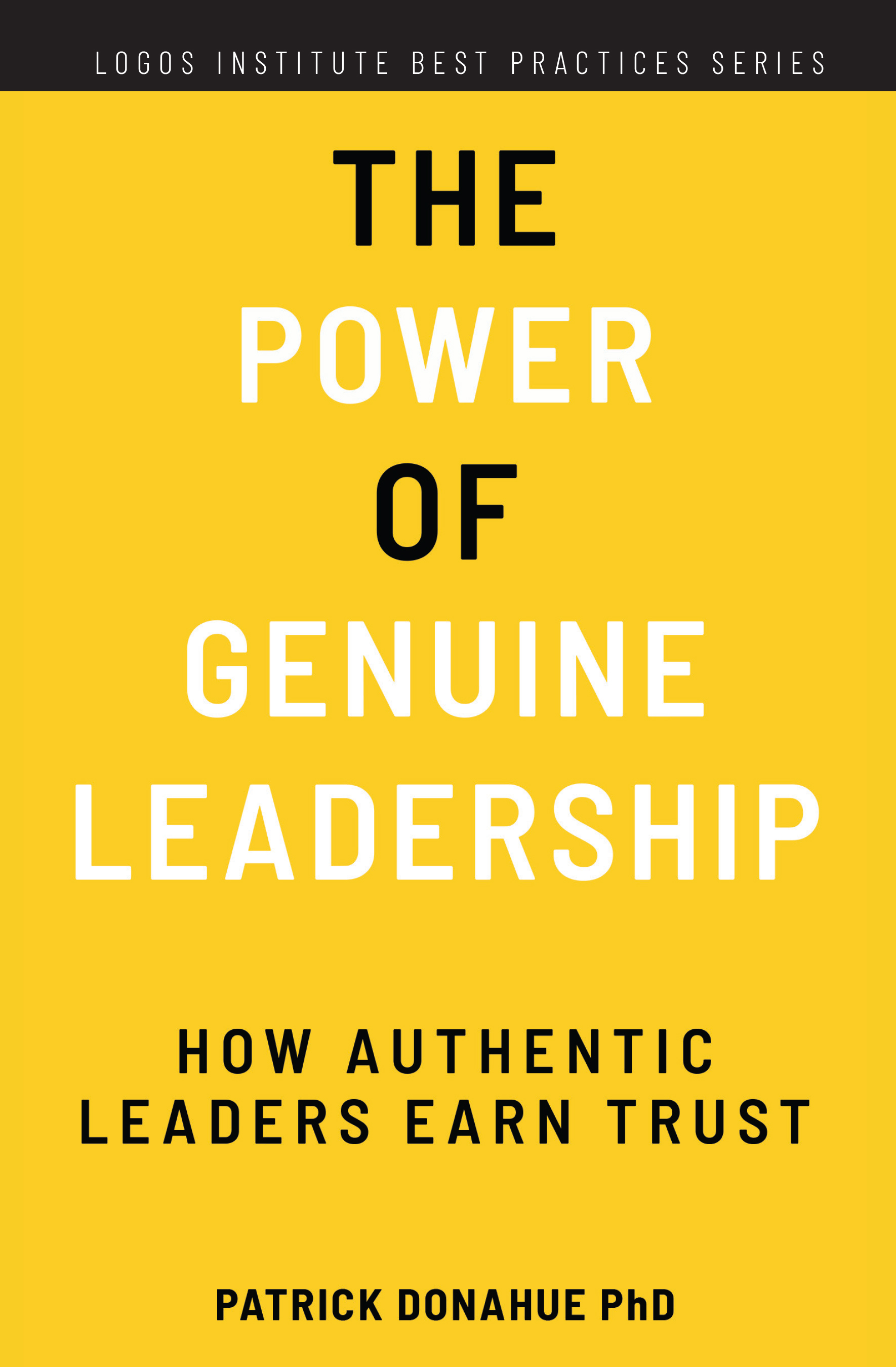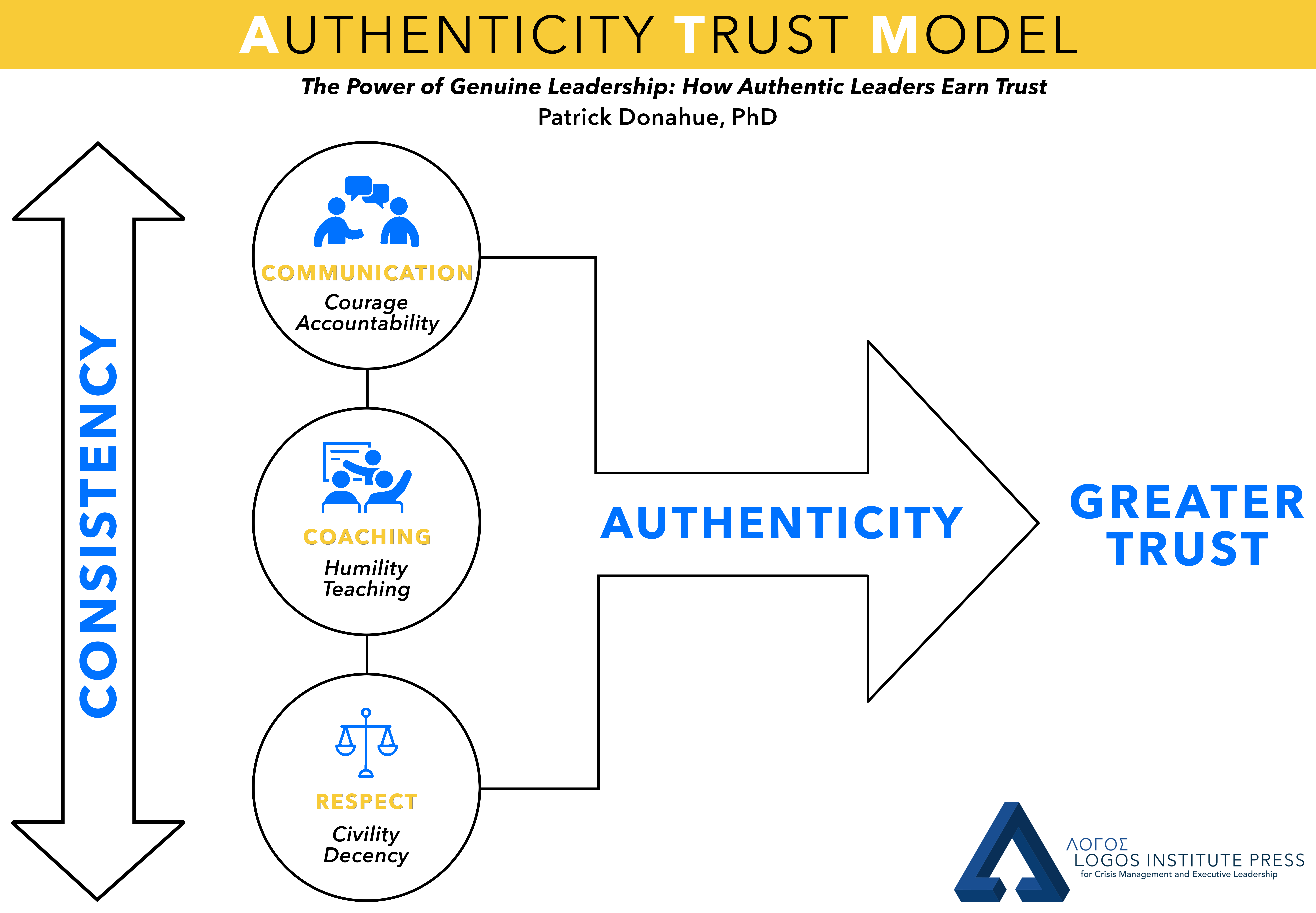On November 4, the Logos Institute for Crisis Management and Executive Leadership Press published the third title in its Best Practices Series, The Power of Genuine Leadership: How Authentic Leaders Earn Trust by Patrick Donahue, PhD. The Power of Genuine Leadership draws upon Donahue’s doctoral research on the relationship between trust and authenticity, as well as his decades of experience working as a senior executive in leadership development at two global corporations.

The Power of Genuine Leadership is an accessible, clear guide on how to effectively – and measurably – build trust and enhance one’s leadership ability. “It can take a lifetime to earn a reputation of being a great leader, which is earned through consistent behavior over time,” says Donahue. “This book makes a complicated concept easier to digest through models, stories, assessments, and applicable tools.”
Donahue’s research reveals the true power of behavioral consistency as an essential yet under-appreciated driver of trust. His Authenticity Trust Model (ATM) helps readers visualize the relationships among the behavioral components that, when applied consistently, create deeper trust: communication, coaching, and respect.

Of the many valuable learnings in Donahue’s book, perhaps his most insightful, is that authenticity without guidelines is irresponsible; that authenticity without empathy is careless; and that humility is much more than a willingness to be vulnerable. Readers can assess their leadership strengths and development areas using the Authenticity Trust Assessment (ATA), which can be taken time and again to track progress and compare results for deeper analysis.
“With so many books, articles and webpages clamoring for our attention, it’s hard to decide what’s ‘worth the time.’ As a leadership professional, I can tell you, this book is a winner,” says Darryl Spivey of the Center of Creative Leadership. “Dr. Donahue captures the stories of leaders and their impact on people. The engaging anecdotes are entertaining and readable, but interwoven with valuable lessons of introspection, laser focus and excellence. It’s a quick, valuable and important book for leaders.”
The Power of Genuine Leadership is the third volume in the Logos Institute Best Practices Series. The Logos Institute for Crisis Management and Executive Leadership stands at the intersection of scholarship and practice, providing rigorous analysis and practical application of key leadership principles. The Logos Institute Best Practices Series showcases conceptual frameworks that help clarify complex issues, combined with insightful case studies, examples, and actionable tools, tips, and techniques that help leaders make smart choices and build competitive advantage.
“In each of the companies where I have had the privilege to have Patrick as a client, I have watched Patrick as he created leadership learning opportunities for high-potential future leaders from around the world,” says Publisher Helio Fred Garcia. “I am thrilled to have the opportunity to share Patrick’s insights into the relationship between authenticity and trust with the broader world.”
The Power of Genuine Leadership is available in paperback and Kindle editions on Amazon.com. Logos Institute Press is hosting a virtual book launch event on Thursday, December 10 at 5:00 pm EST, where attendees will have the opportunity to hear from the publisher, the author, and endorsers of the book. If you have not received an invitation or would like to request one, please visit https://www.eventbrite.com/e/logos-institute-press-book-launch-for-the-power-of-genuine-leadership-tickets-129244719435?ref=estwhttps://www.eventbrite.com/preview?eid=129244719435
